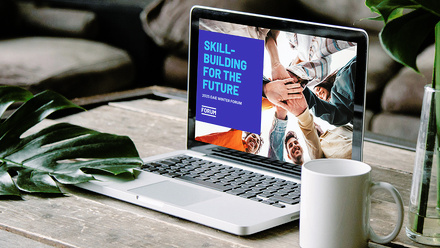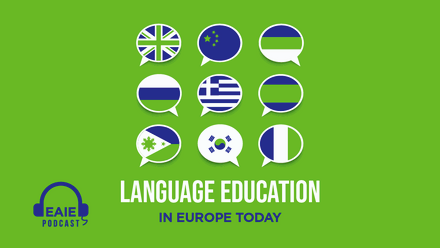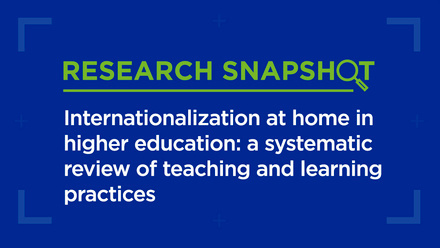Three key components of intercultural learning

Continuing 2019 Spring Forum Week, we turn to one of the broader questions framing the idea of ‘the evolving classroom’: what does it take to facilitate true intercultural learning? While many educators will identify with the desire to transform their diverse classroom into a space for building intercultural competence, those good intentions won’t go very far without three key components.
“They never showed up when we had a project meeting. We waited for 10 minutes but left when they didn’t come.”
“They were obviously not interested. They never contributed anything when we brainstormed how we should proceed.”
“They have no clue how to do a proper presentation and their English is really bad.”
These statements may resonate with any academic who has international students in their classroom, especially when these are incoming students who stay for one semester only. It is common practice to mix local and international students in project groups in the hope that they can benefit from each other and thrive in an international environment. But however well-intentioned this may be, it often doesn’t work. Are local students just not willing to collaborate with their international colleagues? Or is it maybe the international students who don’t want to adapt?
Good intentions are not enough
While a lack of willingness may be the problem in some cases, there are other factors that play a role and are worth looking at more closely. In many universities, especially in the later semesters, learning activities that involve teamwork in group projects are favoured. But have students, both local and international, been given adequate preparation for working in mixed teams? How familiar are they with different communication and conflict styles or diverging attitudes towards time and punctuality?
An international student may have been socialised in an environment where indirect communication is the norm, meaning that they find it difficult or even impossible to express their opinions openly and spontaneously in a brainstorming session or use direct feedback mechanisms such as Scrum. Or they may come from a culture where building relationships when working together is more important than being on time for a meeting. Most international companies are aware of these issues and provide training possibilities for their international teams in cooperating across cultures. Why, then, do we expect our students to be able to do this without any training? It is simply not fair on the students involved, and it is not fair on teachers when their students are not prepared for the multicultural classroom. The result is frustration on all sides and often the assertion that the multicultural classroom just does not work.
If assessment is only results-oriented, students will avoid integrating someone who they think might lower their grade or slow down their activities
The lack of professional development for teachers in integrating students from different backgrounds is one reason that the most powerful mechanism to leverage the benefits of classroom diversity is rarely used. It is a proven fact and very understandable that students orient themselves towards the aspects of a course that are assessed at the end. Teachers may want their students to collaborate with others from different backgrounds and students may also be willing to do that. But what is more important to them is a good grade. So if assessment is only results-oriented – for example, if only the final reports or presentations are the basis for the grade – students will avoid integrating someone who they think will potentially lower their grade or slow down their activities. Sometimes, the names of international students are on the project reports when they have not been properly involved. In presentations, they may be given a minor part or none at all. If asked why, local students will provide explanations similar to those above and claim that the international students should be glad as they also got a good grade. Perhaps they will be glad, but they may also be ashamed and embarrassed about this treatment and the low opinion of their competencies.
Translating good intentions into effective practices
What, then, can turn good intentions into effective classroom practice? In my opinion, the three most important measures are as follows.
First, we need to prepare students for collaboration across cultural boundaries by sustainably building the required skills into the curriculum. It would be a Herculean task to teach them how to communicate across cultures at a time when they are already collaborating and focusing on a challenging project task. They need to gain these skills beforehand, which can only work if the skills are regarded as contributing and relevant to the overall qualification profile and are thus reflected in the module learning outcomes. This needs careful planning and cooperation between all faculty members.
If students are graded on the way and the extent to which they integrate different perspectives, they will stop focusing solely on the result
Second, assessment needs to focus on the process as well as the result. If students are graded on the way and the extent to which they integrate different perspectives, and are asked to reflect on this, they will stop focusing solely on the result. If the curriculum has already provided them with collaboration and intercultural skills, they will have the ability to put these into practice and will be more open to doing so – especially if they are made aware that these skills are a prerequisite for their future career prospects.
Finally, teachers should be given the opportunity to gain international experience and should be motivated to use this to reflect on their own – often unconscious – values and preferred teaching styles. Any curriculum is only as good as the people who are putting it into practice in the classroom, and the best-formulated learning outcomes will not be effective if teachers are not trained for the multicultural classroom. Universities need to offer training that includes how to deal with classroom diversity. Individual efforts are valuable, but such training should be integrated into universities’ internationalisation and professional development strategies.
Mixed project teams and classroom diversity can be very effective in developing mature personalities and in preparing students for their future workplace environments, which will be characterised by change and disruption. Flexibility, agility, perspective shifting, and communicating and collaborating with people from different backgrounds are highly relevant skills in helping people to cope with modern workplace challenges, and they are increasingly valued by employers. The multicultural classroom as a preparatory laboratory for these challenges only works if all involved – curriculum designers, teachers and students – are well prepared. Only then will good intentions yield good results.






